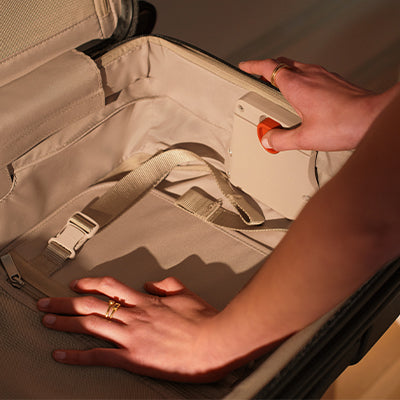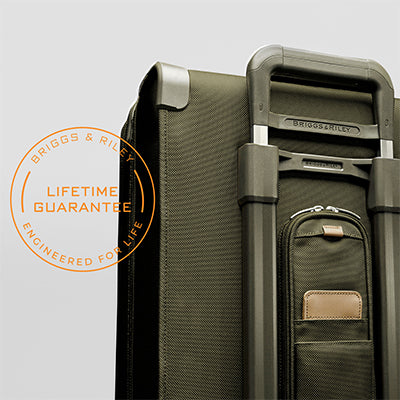Travel is limited right now, but luckily, road trips are still on the table.
While a getaway may sound appealing (especially during these uncertain times), you’ll have to do a little extra planning if you want to take your pet along for the ride. After all, fur babies are like family, so you may not like the thought of leaving your four-legged friend at a boarding facility or under someone else’s care.
Taking a road trip with a dog or cat need not be a hassle. Here are 16 useful tips for long drives to help you prep your car, stay safe, and keep your fur ball as comfortable and stress-free as possible.
1. Have a Chat With Your Vet
It’s always a good idea to visit your vet before traveling with your pet. Not only to make sure your pet’s health is up to snuff but also to discuss ways to ease any anxiety and treat possible motion sickness. There are several pet-friendly medications your vet can prescribe, along with additional tips on the best time to feed your hound or feline and ways to make them more comfortable on the road.
2. Get Your Pet Familiar With Your Car
When it comes to how to travel with a dog or cat, you’ve first got to get them familiar with your car. Cats are particularly finicky when adjusting to new spaces, but any animal can be a bit wary of unfamiliar surroundings. The day you’re leaving shouldn’t be the first time your pet is introduced to your wheels. Start by taking your fur ball out to the car. Sit in the back seat together and engage in activities like you would typically do indoors — administering treats, pets, brushing, etc. After you’ve tried that a few times, take a few short test drives to get your pet used to the movement of the car.
3. If Your Pet Isn’t Already Microchipped, Do It!
While you should never open the car door until your pet is on a leash or is secured in its carrier, things happen. If your pet isn’t already microchipped, make it happen before your trip. The American Humane Association estimates over 10 million dogs and cats are lost or stolen in the U.S. every year — don’t let your fur baby be a part of this sad statistic!
4. Make Sure Tags are Up-to-Date
You’re probably not looking at your pet’s tags every day, so double-check that all of the contact information is current — the same goes for the info associated with their microchip.
5. Bring a Copy of Your Pet’s Vaccination Records
Nobody wants to think of their pet getting sick at any moment, let alone when you’re away from home. In the unfortunate event that you have to take your fur baby to the vet, make sure you have a copy of their most current vaccination records.
6. Pack Their Favorite Things
As mentioned, it’s not uncommon for pets to have travel anxiety, so don’t forget to pack their favorite toys, blanket (the smell prompts comfort) and make pit stops for playtime. Be sure as a responsible pet owner that you bring a leash (harness for a cat.)
7. Be Equipped with a Crate or Pet Carrier
Wondering exactly how to travel with pets? For dogs, a collapsible crate can help your pup feel safe once you reach your destination, be it a foreign hotel, house, or even a camping facility. A crate is also nice to have on-hand if you want to go somewhere without your pet — like a restaurant, for example. For cats, a pet carrier is a must as you’ll need it as a mode of transport, but you may also want to keep your kitty inside while on the road — it depends on how well they behave in a car. You don’t want your cat to wind up under your feet while you’re driving. Small dogs can benefit from a carrier for the same reason. In the case of both crate and carrier, be sure to familiarize your pet with these temporary lodgings so that it’s not a traumatizing experience for the first time. Toss in an article of your clothing and favorite toys for comfort. Our Deluxe Pet Carrier is the perfect size for a road trip, but it’s also small enough to fit under the seat on an airplane should your kitty or small pooch ever fly the friendly skies with you. The inner leash ensures their safety while the mesh and zippable window on the side allows them to poke their head out and explore. You know those vaccination records we mentioned? You can store them in the expandable side pocket — along with toys and treats, of course.
8. Be Prepared for Your Car to Get Dirty
From dirt to crumbs of food to slobber to bathroom accidents, be prepared that your car will get a bit messy. Whatever you do, don’t take it out on your pet. You knew what you were signing up for when you decided to bring them with you on a road trip. If you’re really concerned, consider seat covers, layering the floor with plastic (garbage bags will do), and investing in a cordless, hand-held vacuum cleaner. In the event that your pet gets wet (be it a rainy bathroom break or a spontaneous roll in a puddle), pack a few quick-dry towels to soak up moisture in a jiffy.
9. Research the Regulations in Your Destination
Ensure you understand the rules and regulations in your final destination to ensure the areas you are going to are pet-friendly. This means public spaces and the place where you’re staying. Heck, even your family or friends may have other plans, so make sure this is a clear convo so your fur baby doesn’t wind up in the garage.
10. Make Space For Your Fur Baby (and Make It Feel Like Home)
When packing your car for a road trip with your pet, make sure you leave your dog or cat enough space so that they’re comfortable — the more comfortable they are, the better they will behave. Place a comfy pet bed or blanket on the seat (or in a carrier if you go that route). Even one of your shirts can provide comfort as the scent will remind them of home.
11. Low and Slow
Loud music is stressful for pets — especially cats — so opt for soothing tunes and keep the volume down. It’s been said that classical music can help dogs and cats relax, so time to rock a little Bach. Speaking of low and slow, avoid any erratic moves when driving, such as stopping short, making sharp turns, and going over the speed limit. Be mindful of how everyone in the car holds a conversation, do. Avoid being overly loud — shouting at the driver in front of you or starting an argument are likely to stress your pet out more than yourself. Be sure to provide some soothing words to your fur baby from time-to-time.
12. Reward Their Good Behavior
When it comes to making your pet behave in the car, positive reinforcement can go a long way. Pack those treats and administer them when your pet sits calmly upon command, stops making noise, goes to the bathroom in the correct place, etc. Hopefully, this behavior sticks and your next road trip will go more smoothly.
13. Monitor Bathroom Needs
For dogs, this means regularly making pit stops so they can relieve themselves and expel some pent up energy – but keep a few pee pads in the car just in case there’s an accident (nerves, etc.) For cats, you can use either line the carrier with a disposable liner or, if there's space, place a small litter box on the floor. Just be sure to line the floor with plastic in case there are any spills. Definitely bring trash bags, paper towels, and a cleaning product to make it easier to clean up on the road.
14. Be a Respectful Pet Owner
Be it a rest stop or public park, be a respectful pet owner, pick up after messes, keep your pet leased (especially around other humans and animals), and don’t let your fur ball get too close to others. Even if your pet doesn’t have a history of bad behavior, you never know how Fido or Fluffy might react in a new environment.
15. Make Sure There’s Always Access to Fresh Water
Bring a collapsible water bowl and some bottled H20 to ensure that your pet stays hydrated at all times — especially if they’re stressed or it’s warm outside. Keep it on a plastic-lined floor, and make sure your pet knows it’s there.
16. Be Mindful of the Weather
Never under any circumstances should you leave your dog or cat in a hot or freezing cold car — we don’t think we need to explain why, but what you may not know is that animals can die within ten minutes (just ten!) of being in a hot car. If it’s too cold for you in the car, it’s too cold for your furry companion.





















Leave a comment